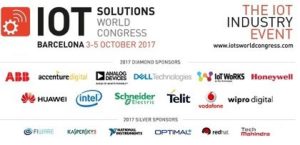PTC and Flatirons Solutions to Help Drive Global Enterprise Augmented Reality Ecosystem and Best Practices
PRESS RELEASE ANNOUNCES AREA NEW MEMBERS
WAKEFIELD, Mass., USA – March 28, 2017 — The Augmented Reality for Enterprise Alliance (AREA) announced today that two new members joined the only global membership funded alliance helping to accelerate the adoption of enterprise augmented reality (AR) by creating a comprehensive ecosystem for enterprises, providers, and non-commercial institutes.
PTC, provider of the ThingWorx® industrial Internet of Things platform (IoT) and Vuforia® augmented reality platform and Flatirons Solutions, a global provider of technical information management solutions for knowledge-driven industries, joined AREA at the Sponsor Level and accepted Board of Directors seats.
Augmented Reality (AR) is the integration of digital information with the user’s environment in real time. Unlike virtual reality, which creates a totally artificial environment, AR uses the existing environment and overlays new information on top of it.
“AR projects in our industry continue to expand as businesses realize the potential of this technology,” said Mike Campbell, executive vice president, ThingWorx Product Management, PTC. “We joined AREA to help the industry define future enterprise AR best practices and to build relationships with important AR vendors, educational institutions, and other companies that are on the forefront of AR technology.”
The AREA supports innovative companies, aspiring to invest in AR who need a better understanding of the tools available, application possibilities, methods of implementation and return on investment. It provides a free and open exchange of best practices, lessons learned, and technological insights which can help enterprises effectively implement AR technology, boost operational efficiency and create long term benefit.
“Joining AREA allows Flatirons to contribute to the development of the enterprise AR eco-system,” said JD Sillion, chief solution officer, Flatirons Solutions. “Enterprise AR solutions are ideal platforms for making content lifecycle management even more impactful for customers. AR allows organizations to better achieve their mission by Turning Content into Knowledge® for strong productivity and asset utilization gains.”
The AREA’s membership benefits include access to high-quality, vendor-neutral content and participation in various programs, a research framework to address key challenges shared by all members, discounts for fee-based events, and more. Sponsor members have a direct role in shaping the rapidly expanding AR industry and demonstrate their companies’ leadership and commitment to improving workplace performance.
About the AREA
The Augmented Reality for Enterprise Alliance (AREA) provides high-quality, vendor-neutral content and programs for companies like Lockheed Martin, Bosch, Boeing, Huawei, Newport News Group and many more. Discover the benefits of joining the AREA by visiting our membership information page.
More information about the AREA is available here on our AREA website or [email protected].
PTC, ThingWorx, and Vuforia are trademarks or registered trademarks of PTC Inc. or its subsidiaries in the United States and other countries.

